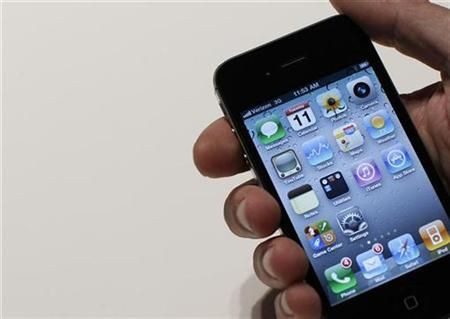Verizon iPhone Goes On Sale, Still Has Death Grip

As the Verizon iPhone goes on sale from today, there are indications that the antenna problems that dogged the phones this past summer persist.
Jeremy Horwitz, who posted a video yesterday on his site, ilounge.com, that showed the same death grip issue as with AT&T in the summer, said the problem may be fundamental to designing an antenna outside the phone.
In his video he tests the phone on both the 3G network and in Wi-Fi mode. Horwitz says he found that gripping the phone in a certain way caused the signal bars to drop, and web pages to load more slowly, sometimes failing to do so. A similar problem appeared in Wi-Fi mode.
The iPhone also loses a lot of signal strength when it is held in a death hug -- in horizontal mode with the hands wrapped tightly around it. Horwitz says that position is more likely to occur when playing a game, though he admits that few people would hug the phone in such a way as to block the signal completely.
Despite the problems, Horwitz says he likes the phone (he owns one) and that the problem can be solved using a case. But he added that he is disappointed that Apple didn't try to address the problem in the next iteration of the iPhone. They didn't fix the underlying attenuation issue, he said.
Horwitz's review contrasts sharply with initial reaction from other technology blogs, notably Engadget, which noted that the antenna had been redesigned, partly due to the switch from a GSM network (used by AT&T) to the CDMA network used by Verizon. The Engadget review noted that covering the bottom half of the phone could cut the signal strength, but didn't seem to find any pronounced problems with gripping the phone. It did note that Verizon's network seemed to provide better reception.
Horwitz acknowledged that there would probably be a big difference among users depending on where one is located relative to the local cell towers. He added that his tests weren't scientific -- they were designed to duplicate what actual users might do and find problems that were likely to come up.
The death grip issue first surfaced In July, when reports from consumers and several technology blogs said the iPhone 4 lost signal strength when users touched the edge of the phone in a certain way -- one that turned out to be the way a lot of right-handed people would hold it. The problem, due to the physics of antennas, eventually resulted in lawsuits. Apple eventually issued free cases to address the problem, though at a presentation Steve Jobs insisted that it is common to all mobile phones.
Despite the antenna problem, sales are still expected to be brisk. Apple said that it sold 16.2 million iPhones last quarter -- before it was available on Verizon's network.
© Copyright IBTimes 2024. All rights reserved.





















